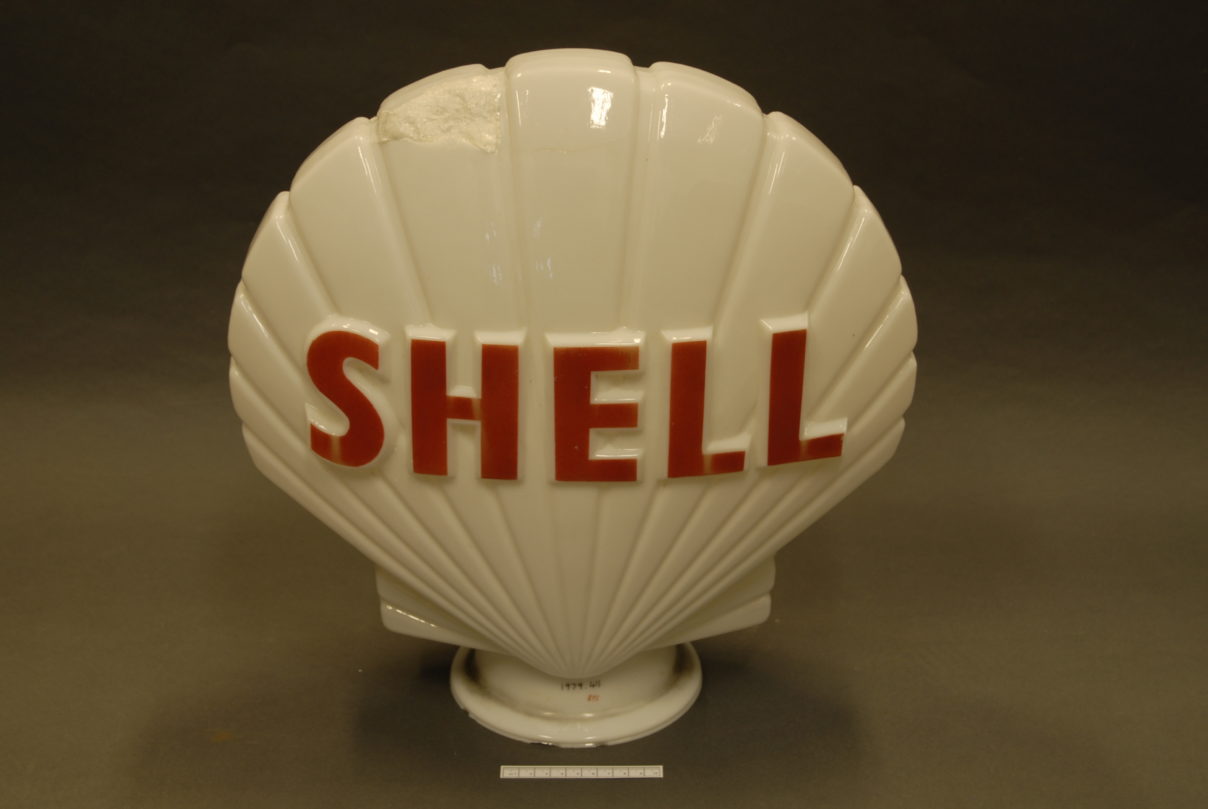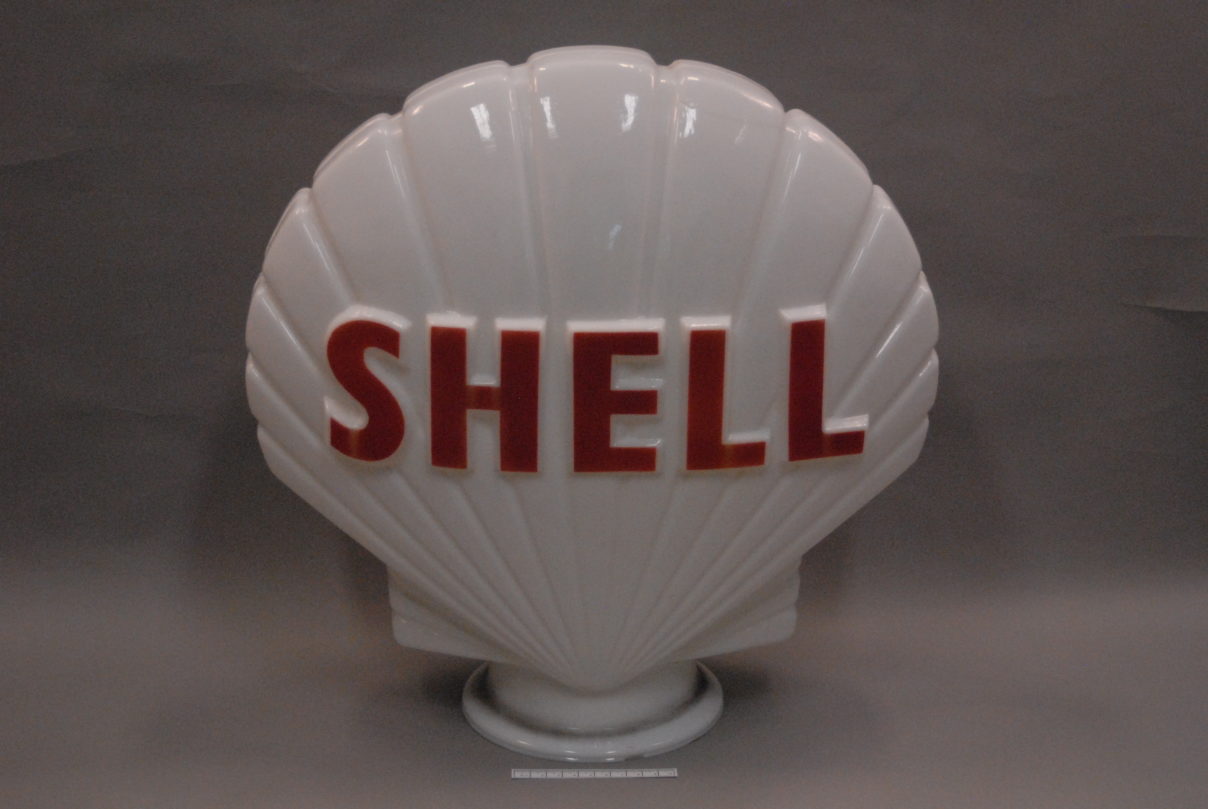Shell Advertising Sign
Object

The object is a white glass petrol globe advertising Shell petrol made by Webbs Crystal Glass Company in London, and is part of the collections at Beamish Museum. The petrol globe is in the shape of the SHELL logo with the lettering painted red on both sides, and appears to have been cast in a mould due to the evidence of casting flash lines around the edges. Given the design of the letting, which is thicker than the modern Shell lettering, it’s possible this globe dates to the 1950s / 1960s.
Petrol pump globes were usually attached to the petrol pump base units and as they were lit up, they could be seen from a distance. This was an ideal way to allow drivers to see what brands of petrol were available before they had reached the petrol station, which would then determine whether or not they would stop to fill the tank.
Condition
- There are signs of light dirt on the surface
- There is evidence of an old repair along the top edge on one side
- There is an area of surface material loss along the top edge on one side, which has been previously filled.
Conservation
The object was initially cleaned using a museum vacuum and a soft brush in order to remove the light covering of dust on the surface. As the old fill wasn’t aesthetically pleasing, the decision was made to remove it. Acetone was found to successfully soften the fill and so was applied sparingly until the fill was able to be removed. Additional residue was removed using cotton wool swabs slightly dampened with acetone. The old repair was also taken down at the same time as the fill, as a couple of the sherds didn’t appear to be aligned correctly.

The sherds were temporarily taped together in order to work out their correct positions and were then placed into the missing section of the object to ensure a good join could be achieved. In order to secure them in place, they were adhered using an appropriate glass adhesive with a long curing time; this allowed for any small adjustments if necessary.
In order to ensure the new fill was reversible, the edges of the area to be filled were coated in a suitable adhesive. By dissolving the adhesive at a later date, the fill could then be removed if required. As the area to be filled was in a difficult location the decision was made to cast directly onto the object rather than trying to make a mould. Dental wax was moulded to both sides of the area to be filled and sealed with plasticine to ensure there would be no leaks. The decision was made to use a pigmented resin for the fill material as this would most closely match the original glass while still being recognisable as an addition. Two small holes were cut from the outer wax wall which would allow the resin to be applied directly into the fill area using a pipette as well as allowing air to escape which would minimise the risk of air bubbles.

Once the resin had cured the wax was removed and the area was cleaned in order to remove any wax and resin residue. The two holes were then backed with wax and filled using the same process. As the fill wasn’t as smooth as the surface of the original glass, it was sanded and polished using fine grade sandpaper while the original glass was protected to prevent scratching..
To mimic the glossy finish of the glass the fill was coated with an appropriate glass coating and allowed to cure. Finally, the interior of the fill was painted with an acrylic titanium white in order to match the opacity of the original glass as the fill appeared slightly more translucent than originally thought.
